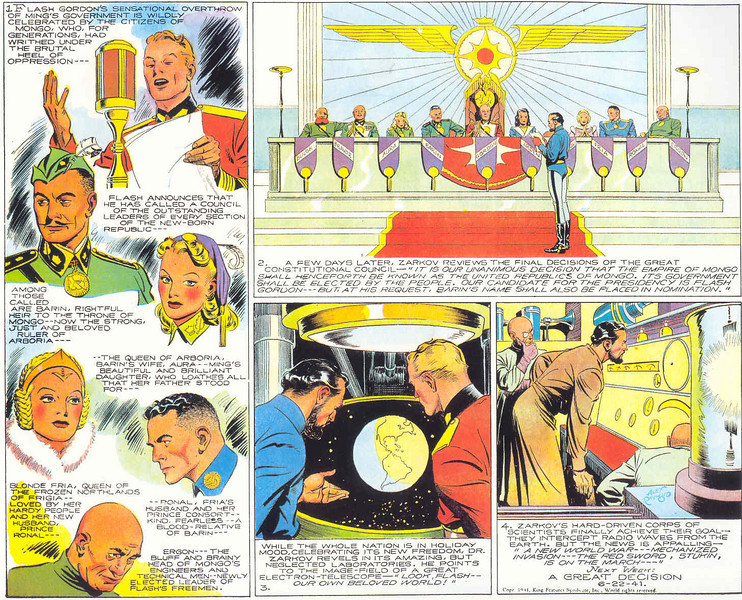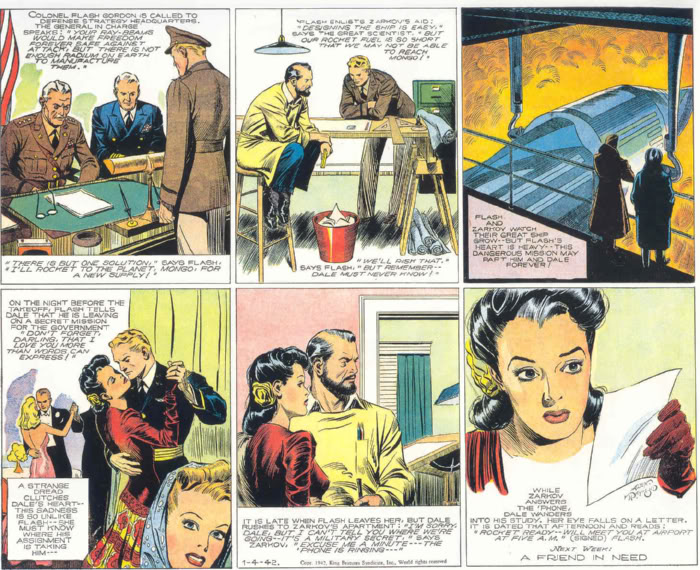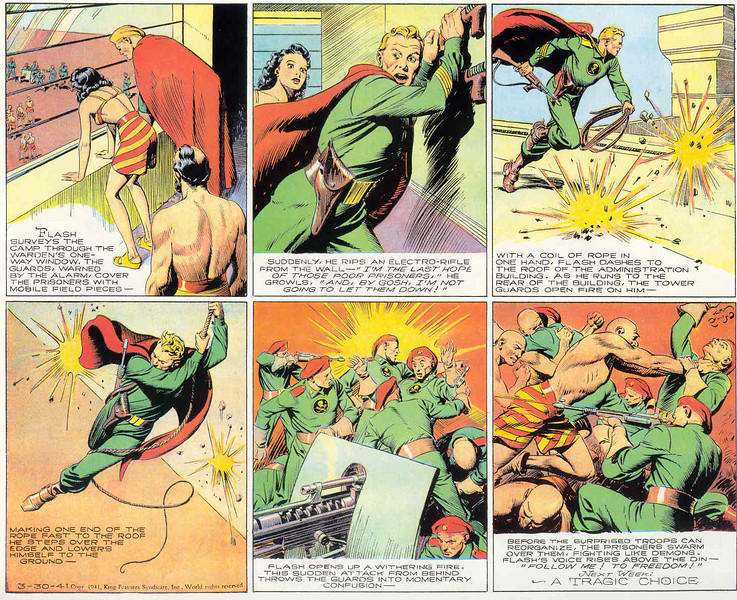Book Review: Flash Gordon, Vol. 3: The Fall of Ming
Posted 7 years ago by Rob Lammle Books

Although the comic strip Flash Gordon might not have invented the space opera genre, it certainly helped define it. And for nearly a decade, the creator and visual maestro behind Flash, Alex Raymond, drew a weekly strip that continues to inspire young artists today. Since 2012, Titan Books has been issuing reprints of these classic comic strips as part of The Complete Flash Gordon Library. Their latest offering, Volume 3: The Fall of Ming, covers the years 1941 – 1944, a time of great transition for not only the world, but also Raymond and his beloved creation.
It might surprise you to hear that it’s not absolutely necessary you read the previous installments of Flash Gordon in order to jump into the weekly comic strip. While there are occasional references to earlier characters and events, for the most part the plot is simple enough to understand even without a complete backstory. So chances are you’ll be caught up and know everything you need to know within a couple of strips. However, I have read some of the early adventures of Flash, and knowing how the strip started back in 1937, helped put a better context on what it had become by the beginning of this volume in 1941.
As you might expect, the Flash Gordon of 1937 was filled with ray guns and spaceships and strange half-men/half-animal hybrids, as well as a full menagerie of wild, bizarre beasts hungry for earthling blood. Flash was constantly fighting someone or something, usually by hand, but occasionally with his superior marksmanship or mechanical prowess. He was the kind of perfect hero with a solid chin and a go-get-em attitude that people wanted to see in a country still recovering from the Great Depression. It’s easy to see why he became such a sensation, even if he was intended as little more than a cash-in on Buck Rogers.
But by 1941, America was a very different place. War was spreading across Europe and it seemed that the U.S. wouldn’t be able to stay out of the fray for very much longer. Not coincidentally, Flash found himself facing his constant enemy Ming the Merciless, a ruthless dictator whose secret police were rounding up political prisoners for concentration camps where they would be slowly tortured to death. But after his seemingly final battle with Ming, Flash and his trusty sidekick, Dr. Zarkov, intercept radio messages from Earth that tell of The Red Sword, a powerful military force that threatens the freedom of Europe and abroad. Zarkov builds a new rocket, and he and Flash load it up with advanced alien technology to go back to Earth to take on the Nazis…er, I mean, Red Sword.
After this point, the rocketships were mostly gone. Ray guns were still around, but they served simply as rifle replacements instead of a hair-trigger deus ex machina with a magical ray that would help Flash get out of any situation. The occasional dragon must be battled before Flash and tag-along/love interest Dale Arden can reach their next destination, but the beasts are few and far between. In other words, the story has shifted from a less fantastical setting to one more grounded in the realities of the day. You would think it might have gone in the opposite direction, with people craving whimsy to get away from the newsreels and headlines that told of war. But it appears Raymond wanted to give people hope by seeing pale facsimiles of their very real enemies conquered by a fictional, all-American savior.
While the story changes were stark, the artwork saw an even more drastic evolution since the strip’s early days. Part of this is due to the fact that Flash Gordon had become a household name, which meant newspapers were willing to devote more room to it on their funny pages. Rather than having to cram his artwork into tiny boxes, Raymond was given a wider canvas, and it really shows in the amount of detail and artistry he was able to bring to the strip. Upon seeing these later strips, it’s not hard to see why he’s still inspiring comic artists today. The art shows just the right amount of detail, helped along by colors that blend so naturally as to almost have the appearance of watercolor paintings. I’m not sure how well the subtle tones translated to the cheap newsprint page (and I’m sure the quality of the individual press had a lot to do with it, too), but as the strips are recreated here by Titan, they have a wonderful, ethereal quality. I’ve seen other reprint series before and the colors are often overdone and garish, but that’s definitely not the case here.
This volume of Flash Gordon strips signifies yet another transition for the character and the comic – the departure of Alex Raymond. World War II was already weighing heavily on him before the Japanese bombed Pearl Harbor, so once America was roped into the war, he felt he had no choice but to serve. He enlisted in 1943, and after a brief stint creating propaganda posters and official U.S. Marine Christmas cards, he wound up serving in the Pacific Theatre. Although he survived the war, his return to the States did not mean a return to the space opera franchise he created. After Raymond left for the War, Austin Briggs, the artist on the daily Flash Gordon strip since 1940, stepped up and took over the higher-profile Sunday strip duties. King Syndicate, the owners of Flash Gordon, refused to take Briggs off the strip, saying that Raymond had left voluntarily, so they saw no reason to change the status quo. Instead, they offered Raymond the chance to create his own strip, which became Rip Kirby, a long-running daily featuring a brainy detective that broke the hard-boiled mold.
Although the departure of Raymond marks a line in the sand for the strip, it occurred in the middle of a story arc. While some might feel this would have been a fine time to end this volume of strips before picking up in the Briggs era with volume 4, Titan has wisely given readers the rest of the arc for continuity’s sake. It shows the publisher’s commitment to the franchise, rather than the often dismissive attitude seen by others of the non-Raymond works. This series will truly be the complete Flash Gordon, not just the complete Alex Raymond Flash Gordon.
In case you couldn’t tell by now, I loved The Fall of Ming. Titan has once again proven that they’re one of the best companies out there when it comes to pop culture books, by presenting these original Flash Gordon strips in the best possible way. The colors are exquisite, the informational text about Flash and Raymond is fascinating, and their dedication to the story and not just the artist shows they have their hearts in the right place for fans. While I was sent this copy by the publisher to review, I’m going back and buying the previous two books in the series – as well as future volumes – so I too can one day have the complete Flash Gordon on my shelf. I can’t wait.
Titan Books’ The Complete Flash Gordon: Volume 3 – The Fall of Ming is now available on Amazon.com and from other fine booksellers everywhere.



